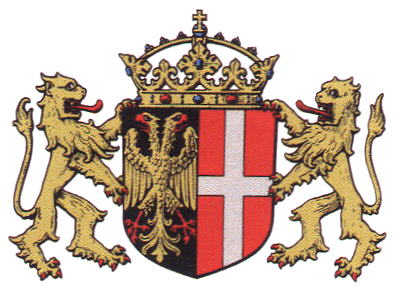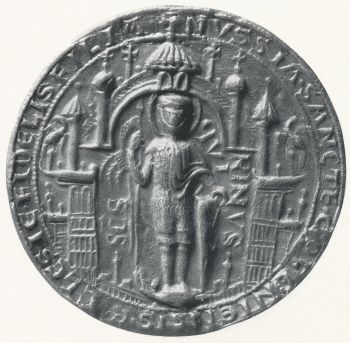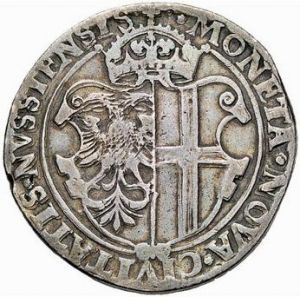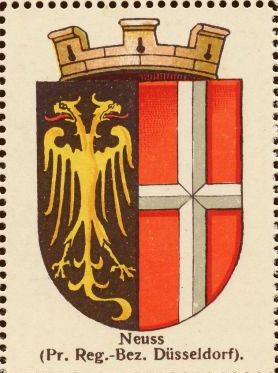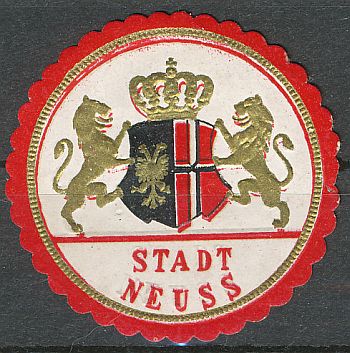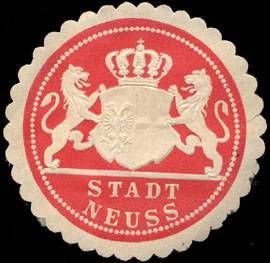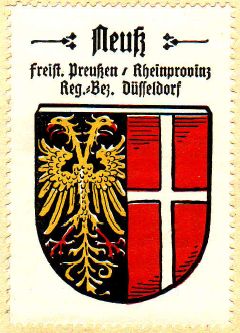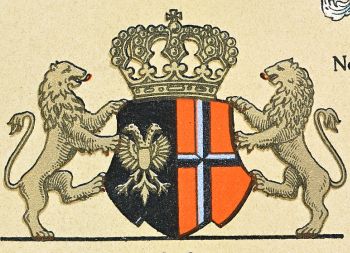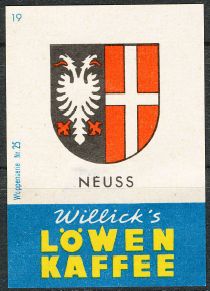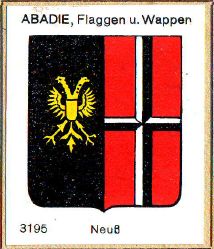Neuss
This page is part of the German heraldry portal |
Heraldry of the World |
|
German heraldry:
|
Selected collector's items from Germany:
|
NEUSS
State : Nordrhein-Westfalen
District (Kreis) : Rhein-Kreis Neuss
Additions : 1929 Grimlinghausen, Uedesheim, Weckhoven; 1975 Holzheim, Norf, Rosellen
Origin/meaning
The arms of Neuss show the Imperial eagle, granted to the city in 1475 by Emperor Friedrich III.
The left half shows a silver cross in red, the origin thereof is not quite clear. It may be a symbol of the crusades in general; it may be derived from the cross of the State of Köln, to which the city belonged; or it may be the symbol of St. Quirinus or Rome.
The latter appears on the oldest knowsn seal of the city of Neuss, known from 1245, but proabably a few decades older. This very large seal (9,5 cm diameter) shows a city gate or castle, with St. Quirinus standing on a dragon and dressed as a knight. He holds a shield with a lion. On later seals and coins the cross appeared as the symbol for the city.
The crown first appears in 1560, the lions in 1637. Afterwards the arms did not really change, except for the (common) omission of the red claws and beak of the eagle in many cases.
| Seal of Neuss from around 1245 |
The arms on a 1569 coin |
| The arms in the Wappen-Sammlung (+/- 1910) | |
| Seal from around 1900 |
Seal from around 1900 |
| The arms by Hupp in the Kaffee Hag albums +/- 1925 |
The arms as shown in a book from 1938 |
| The arms on a 1960s matchox label |
The arms in the Abadie albums |
Contact and Support
Partners:
Your logo here ?
Contact us
© since 1995, Heraldry of the World, Ralf Hartemink 
Index of the site
Literature : Stadler, 1964-1971, 8 volumes; Hupp, 1920s; Diederich, 1984


